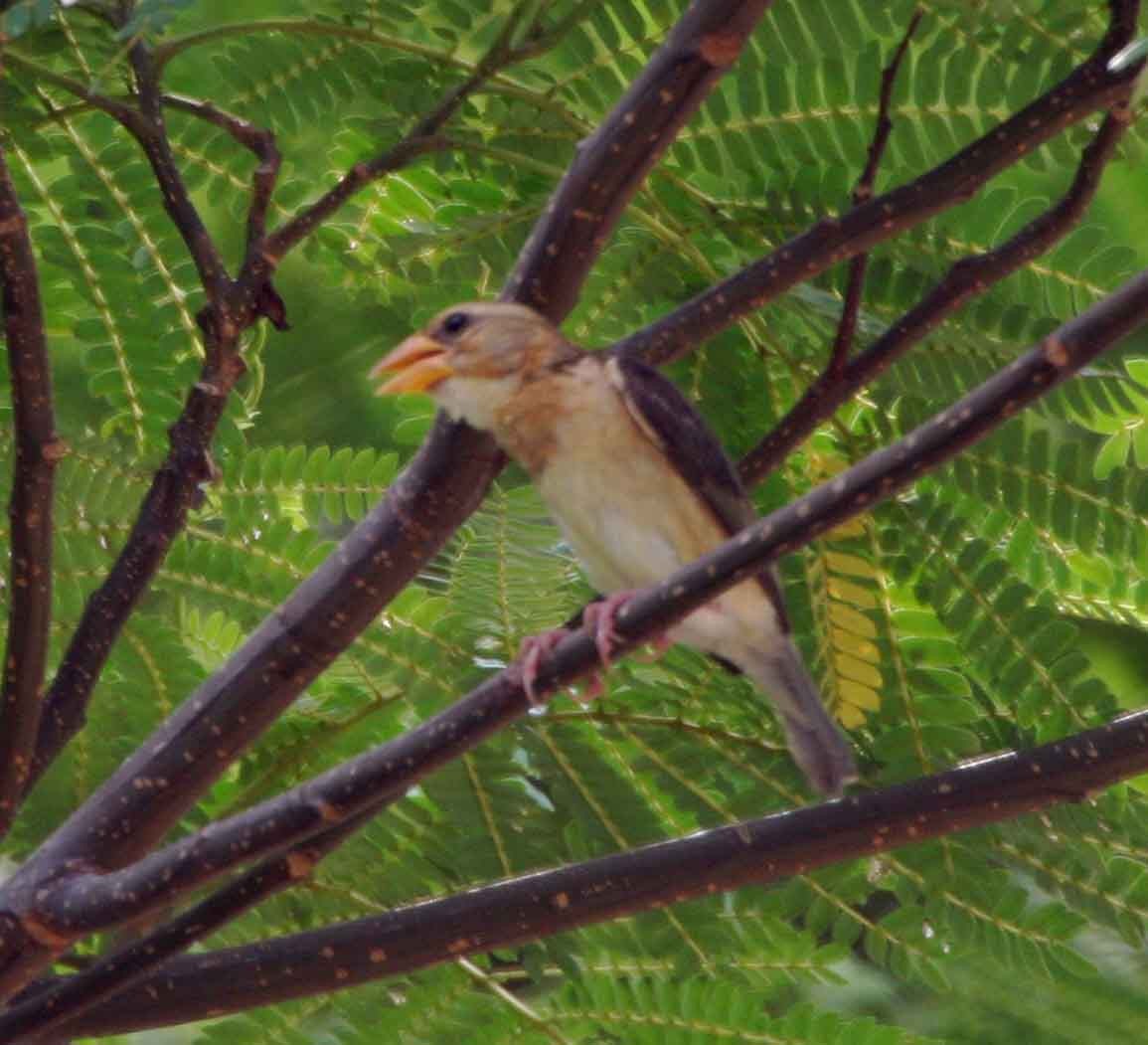Baya Weaver
A species of Typical weavers Scientific name : Ploceus philippinus Genus : Typical weavers
Baya Weaver, A species of Typical weavers
Botanical name: Ploceus philippinus
Genus: Typical weavers
Content
Description General Info
 Photo By Lip Kee , used under CC-BY-SA-2.0 /Cropped and compressed from original
Photo By Lip Kee , used under CC-BY-SA-2.0 /Cropped and compressed from original Description
These are sparrow-sized (15 cm) and in their non-breeding plumage, both males and females resemble female house sparrows. They have a stout conical bill and a short square tail. Non-breeding males and females look very similar: dark brown streaked fulvous buff above, plain (unstreaked) whitish fulvous below, eyebrow long and buff coloured, bill is horn coloured and no mask. Breeding males have a bright yellow crown, dark brown mask, blackish brown bill, upper parts are dark brown streaked with yellow, with a yellow breast and cream buff below. 
Size
15 cm
Colors
Brown
Yellow
Gray
White
Nest Placement
Tree
Feeding Habits
Baya Weaver forages in flocks for seeds on plants and the ground, flying in coordinated formations. They readily glean grains from harvested fields, and may eat crops like rice and grasses, inflicting crop damage. Baya Weaver also consumes insects, small frogs, geckos, and molluscs, particularly when feeding young. Seasonal movements revolve around food availability.
Habitat
Baya Weaver predominantly occupies open or semi-open environments like grasslands and scrublands with dispersed trees, as well as agricultural regions. Habitats often include proximities to water bodies, including marshes and mangroves. These birds skillfully weave distinct nests in predator-deterring locations such as thorny trees or palm fronds. They generally reside in lowlands but can adapt up to 1400 meters elevation in Himalayan foothills.
Dite type
Granivorous
General Info
Feeding Habits
Bird food type
Behavior
Baya weavers are social and gregarious birds. They forage in flocks for seeds, both on the plants and on the ground. Flocks fly in close formations, often performing complicated manoeuvres. They are known to glean paddy and other grain in harvested fields, and occasionally damage ripening crops and are therefore sometimes considered as pests. They roost in reed-beds bordering waterbodies. They depend on wild grasses such as Guinea grass (Panicum maximum) as well as crops like rice for both their food (feeding on seedlings in the germination stage as well as on early stages of grain) and nesting material. They also feed on insects (including butterflies), sometimes taking small frogs, geckos and molluscs, especially to feed their young. Their seasonal movements are governed by food availability. Their calls are a continuous chit-chit-... sometimes ending in a wheezy cheee-eee-ee that is produced by males in a chorus. A lower intensity call is produced in the non-breeding season. They are occasionally known to descend to the ground and indulge in dust bathing. In captivity, individuals are known to form stable peck orders. 
Species Status
Not globally threatened.
Scientific Classification
Phylum
Chordates Class
Birds Order
Perching birds Family
Weavers Genus
Typical weavers Species
Baya Weaver